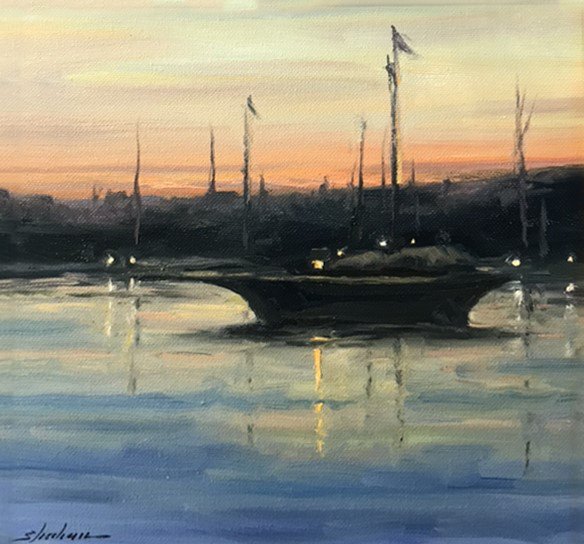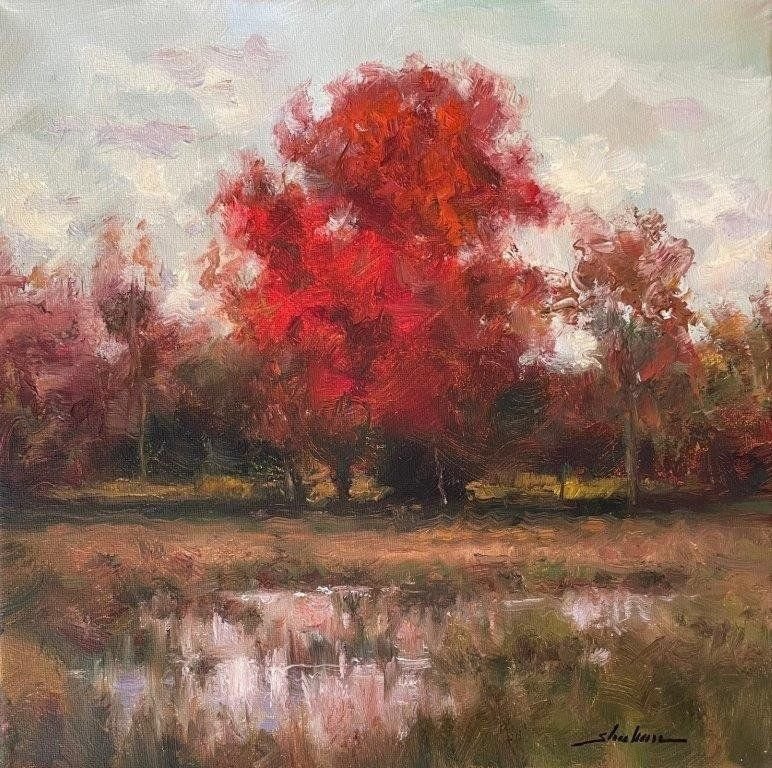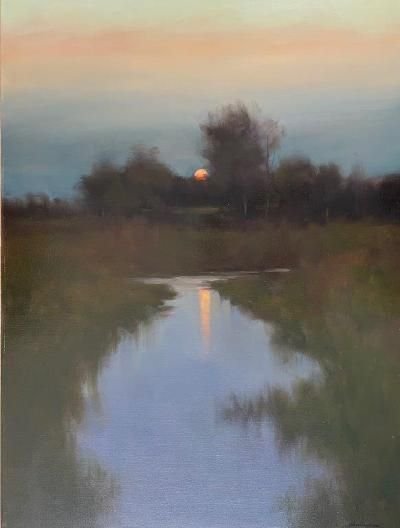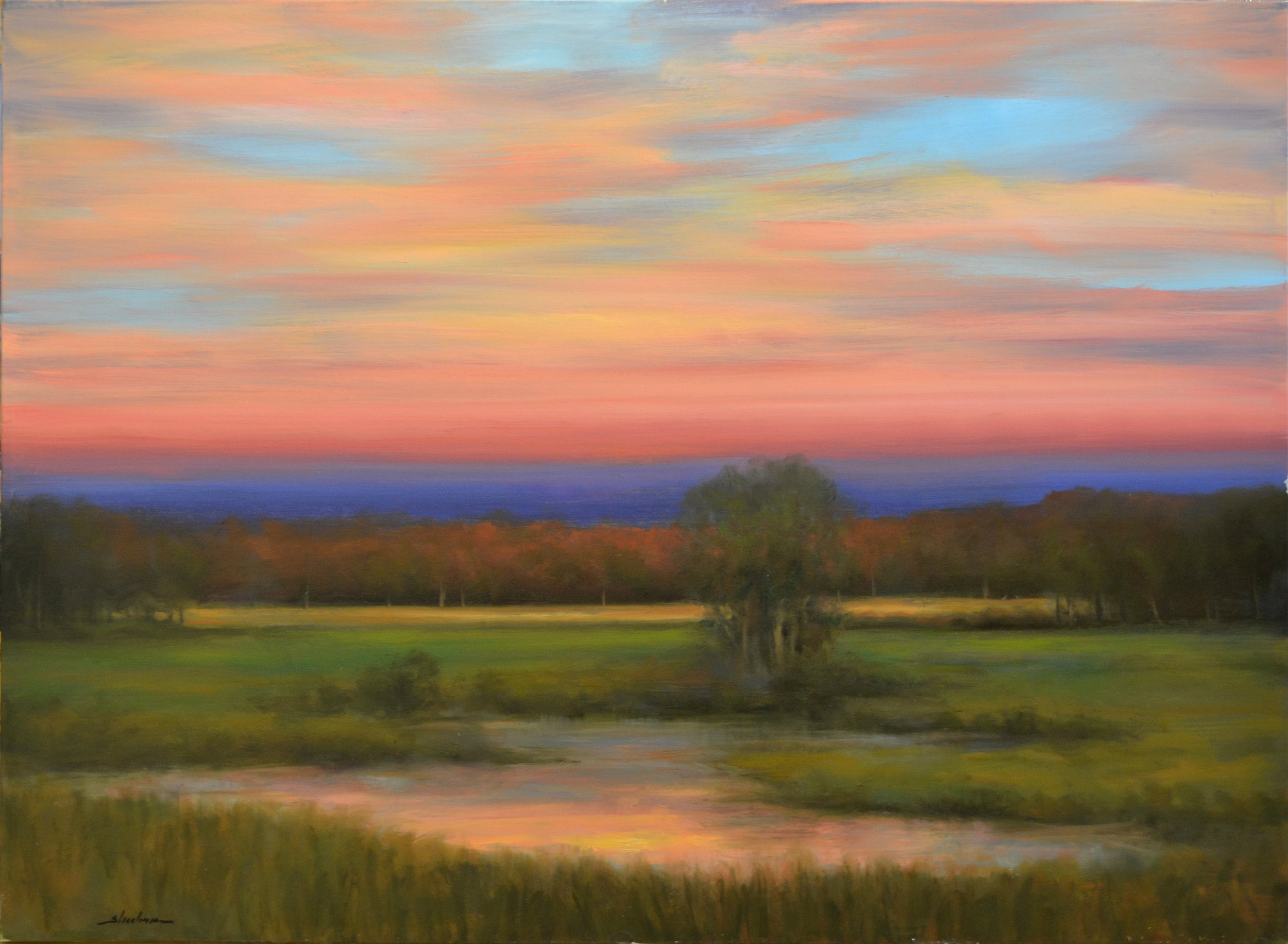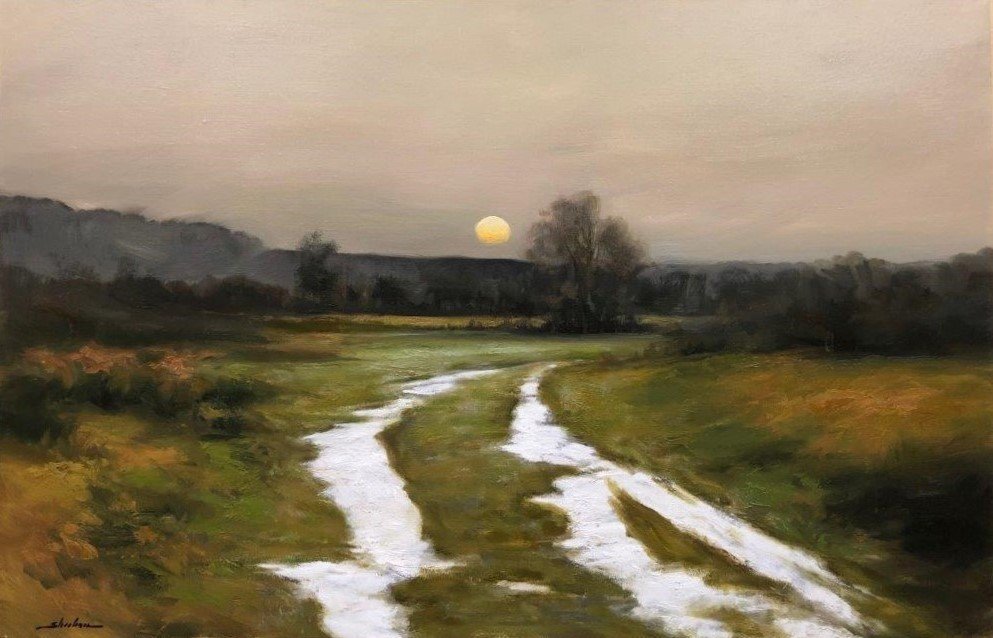
Dennis Sheehan
At Rest, 10x10
Marsh Reflections, 30x30
Winter Skies, 22x30
Sundown Symmetry, 14x20
Harvest Squall, 12x12
Changing Seasons, 12x12
Winter's Warmth, 12x12
Moon Reflections, 40x30
Early Morning, 10x10
Day's Glory, 12x12
Crashing Surf, 12x12
Cool Sunset, 10x10
Pond, 12x12
September Moon, 12x12
Evening Reflection, 12x12
Moon Rising, 30x26
Midfall, 12x12
Moonlight Creek, 10x10
Tangerine Sky, 14x23
Distant Horizon, 12x24
Late Storm, 13x19
Passing Storm, 16x20
Glowing Hedgerow, 18x24
Days End, 14x30
Mystery of Night, 20x29
Golden Sky, 12x12
Sunset Spectacle, 12x12
August Afternoon, 12x12
Autumn Twilight, 10x14
At Rest, 16x20
Last Light, 16x20
A Place to Rest, 18x24
Across the Marsh, 18x24
A Rose Colored Sky, 22x30
Harvest Moon Rising, 22x28
Sunset on the Glen, 24x36
December Dusk, 30x30
Sailing at Sunset, 24x48
Twilight Splendor, 30x40
Early Spring, 29x48
December Sun, 10x10
Best Reflections, 12x12
Last Snow, 10x10
Dennis Sheehan's work is often described as reminiscent of the great masters of the Barbizon School, in France in the 19th century, and the American Tonalist. Born in Boston in 1950, he has works in major public and private collections, including the White House. His work has been featured in many publications including the featured cover of American Artist.
Dennis Sheehan received his training in the best traditions of the Boston School, studying at the Vesper George School of Art and the Montserrat School of Visual Art. He also studied with two of R.H. Gammell's former students, Robert Cormier and Richard Whitney. Like his great nineteenth century predecessor George Inness, whose influence is consciously acknowledged, Sheehan employs the dark palette and thickly pigmented surfaces of the French Barbizon School. Sheehan, like Inness before him, eschews picturesque scenery in the interest of evoking atmospherics. Also like Inness, Sheehan's paintings are produced in the studio from his imagination. For all of the references to history and there are multiple there is no mistaking the artist's debt to the more recent past. Without the legacy of action painting, Sheehan's art would be less forceful and evocative than it is.
Sheehan's pastoral paintings evoke the moody beauty and deep peace of nature. His goal is to have the painting emanate light, rather than just a surface that records the reflections of light the power comes from the shadows. Mysterious and breathtaking, his paintings capture the beholder and transport them into serene landscapes that have reverence for nature's poetic and changing seasons.

